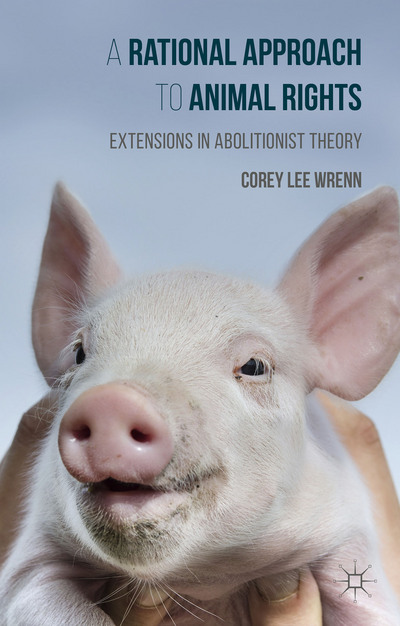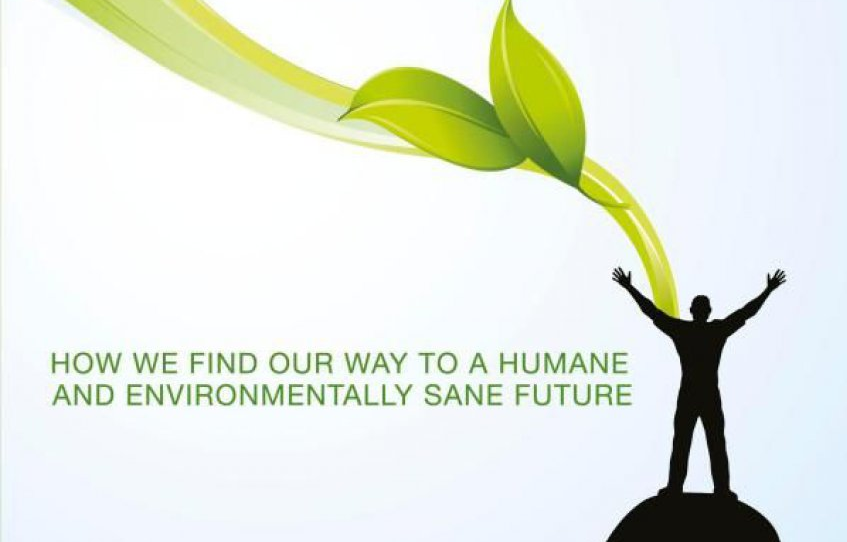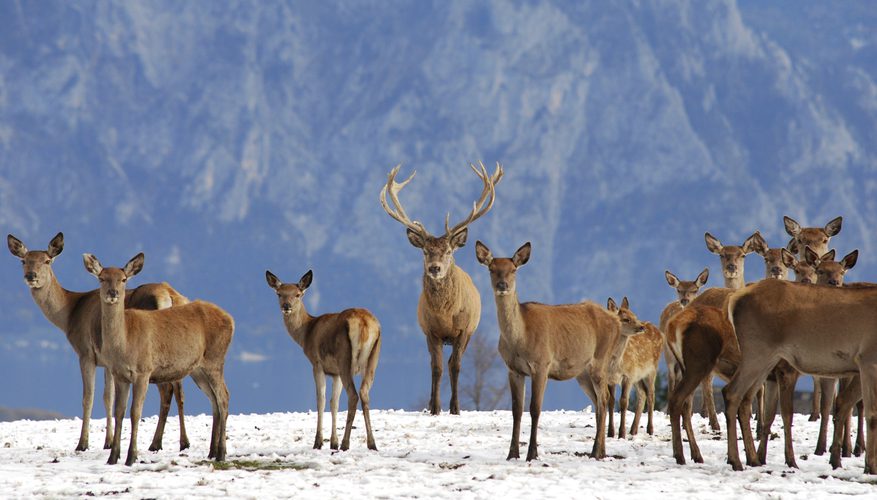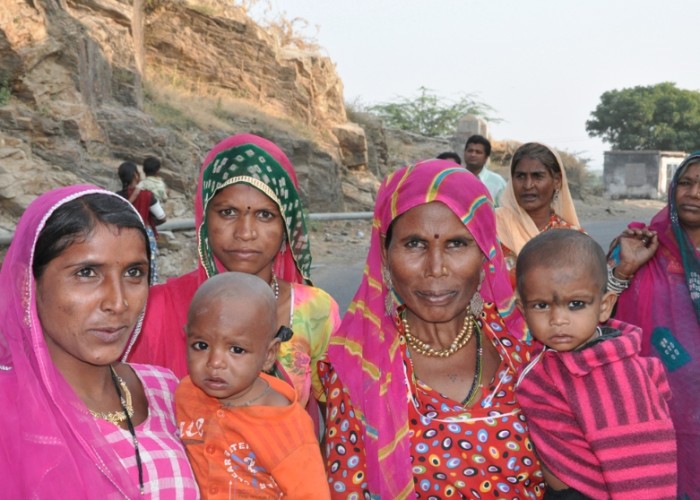Although human relationships with the environment grow increasingly of interest to the scientific community, this same community resists a serious consideration of the role that Nonhuman Animals play in human ecology. In the green discourse, Nonhuman Animals are either objectified or ignored altogether.
As such, the critical exploration of human-nonhuman relationships in the context of climate change and environmental justice is largely relegated to activist scholars. One such researcher is Will Anderson, who’s This Is Hope: Green Vegans and the New Human Ecology presents the first comprehensive book in which Nonhuman Animals are included in the discussion as meaningful agents. Arguably, Anderson’s work acts an environmentally-focused version of Singer’s Animal Liberation. Its central thesis is that environmentalism makes no sense so long as humans persist in their systematic violence against Nonhuman Animals.
“Managing” Nature and Other Animals
The bulk of environmental literature speaks of Nonhuman Animals, not as individuals, but as abstract species categories. When individuals are lost from consideration, any number of injustices can be enacted upon them in the name of “conservation.” This includes “hunting” and lethal “wildlife management.”
In This Is Hope, readers learn how “hunters” artificially remove individuals from the environment to the effect of tampering with evolution. “Hunting” ensures that genes are systematically eliminated from populations in ways that would not otherwise occur naturally. This surely occurs when “hunters” target males, specifically those with larger bodies or more impressive antlers.
Subsequently, humans intentionally create fragile ecosystems that will require human management. The projects of “humane washing” and “green washing” are leveraged by animal exploiters and apologists to justify this forced management. As a result, continued exploitation is abetted while the more ethical (and logical) vegan solution goes ignored.
Environmental Injustice for Other Animals
Anderson’s book offers an extensive overview of how Nonhuman Animals, both domesticated and free-living, are impacted by human activity. This predominately occurs through a process of otherization. The division currently existent between humans and other animals is, as he indicates, socially constructed by humans.
His approach to this thesis is personal. Anderson shares many of his own interactions with various Nonhuman Animal communities and environmental groups to support his claims. Readers learn how Nonhuman Animals matter to the environmental discourse through case studies, research reviews, scientific evaluations of sentience, and the emotional power of anecdotal stories.
There is a discussion of the complexities involved in human and nonhuman oppression. Poverty, ecocide, misogyny, speciesism and other oppressions, he insists, are all interrelated. He also touches on the complexities involved with navigating violence against Nonhuman Animals among indigenous populations.
A fundamental issue of environmental justice for other animals is what Anderson refers to as “neo-predation.” Human predation on Nonhuman Animals is exacerbated because it is based on the increasing human population and its increasing consumption. In simply taking up space, creating noise pollution, laying roads and structural barriers, and introducing invasive species (like cows and crops), humans inflict wide-reaching damage.
A Vegan Ecology
Many significant obstacles to creating a vegan ecology exist. For one, environmentalists are wary to adopt veganism for fear of appearing too sentimental. This problem is one that is faced by many feminized social movements. The nonprofit industrial complex also seems to be at work, since so many professionalized, funding-dependent NGOs dominate the arena of conservation. They are evidenced to stifle radical discourse.
According to Anderson, differing cultural beliefs regarding the environment and Nonhuman Animals means that change-makers have no agreed upon goals. This, in turn, makes collaboration difficult. The nonprofit industry’s hyperfocus on membership and financial support is another complicating factor. “Hunters,” being important funders, enjoy the protection of their interests and a silencing of anti-speciesist ideas. Likewise, professionalized groups generally skirt association with veganism to avoid seeming unreasonable. Finally, the wealth of counter-claimsmaking promulgated by “fur,” “fishing,” and “wildlife management” industries also inhibits progress.
Points to Consider
Empathy
Anderson’s thesis is predicated on his case for the critical importance of “empathy.” However, “empathy” strategies could overshadow the material strategies necessary to truly protect and respect other animals. I would suggest that the logic of social justice and rights may be more effective or should at least be incorporated.
Empathy, while foundational to social justice efforts, could actually maintain human superiority if not buttressed. For instance, feminists do not argue that women deserve recognition and protection only because men should empathize with them. Instead, most feminists insist that women matter because they are sentient beings in their own right who deserve to be free of violence. For some two hundred years, women have rallied to codify this recognition in law and culture. Empathy is important in motivating concern, but I would hesitate to build a theory of social justice on wavering emotional states.
Carnism
Second, Anderson liberally draws on the language of “carnism “coined by Dr. Melanie Joy to describe neo-predation and anthropocentric human ecology. As I have argued elsewhere, “carnism” is a corruption of the more inclusive accurate term “speciesism.” Carnism refers specifically to consuming Nonhuman Animals for food, but a truly vegan approach would recognize that violence against animals entails much more than what humans eat. Animal liberation also extends to what humans wear, how they entertain themselves, and how they exploit other animals for labor, science, and so forth.
Overpopulation
Third, Anderson runs into problems with his focus on human population. He mostly discusses human population growth in the abstract sense, yet it is developing countries where this growth is specifically occurring. Population has largely stagnated or even declined in the West, where individuals have greater wealth and access to social services. Thus, those who politicize human population should be careful to consider just which groups of people are under scrutiny. It is usually the world’s poor and disadvantaged.
People of the Third World bear little responsibility for the destruction and occupation of nature. That responsibility is placed squarely with privileged Western populations. Anderson acknowledges global social inequalities throughout the text, but he, unfortunately, fails to do so in the context of population discussion. Population growth needs to be stopped and reversed, he insists, but exactly how this plan will be implemented goes unexamined. In reality, anti-population growth initiatives violently target poor brown peoples, specifically vulnerable women.
Privilege of Place and Movement
Anderson also suggests that people living in areas in which food must be transported at high cost or in areas that require large amounts of energy for heating and cooling should consider moving. Yet, this is an option generally only available to the socially privileged.
Indeed, a similar shortcoming arises when Anderson suggests that all populations of the world are “uniquely responsible” for the environmental crisis: “There are no exceptions” (303):
Rich and poor, indefensible over-consumers and low-scale consumers, all are drawn into the fray because we each have our varying degrees of impact that require responses. (304)
However, the majority of the world’s human population is so incredibly impoverished that its most pressing responsibility lies in basic survival. Furthermore, Anderson’s narrative of shared responsibility overlooks centuries of Western domination that has manifested this dramatic inequality. Anderson calls for change-makers to adopt “humanity” as their primary identity over nationality, ethnicity, or tribal identification. But, this position overlooks serious social and global hierarchies.
Hope
Although This is Hope repeats many problematic tropes endemic to the vegan movement’s failure to think intersectionally, its merit lies in its faith in change. Veganism, Anderson insists, is the most important means to diminish social inequality and suffering in human and nonhuman societies. For this reason, it remains a vital text in climate change resistance strategies.
A version of this essay was originally published in 2013 on The Academic Activist Vegan.

Readers can learn more about the politics of overpopulation in vegan rhetoric in my 2016 publication, A Rational Approach to Animal Rights. Receive research updates straight to your inbox by subscribing to my newsletter.



